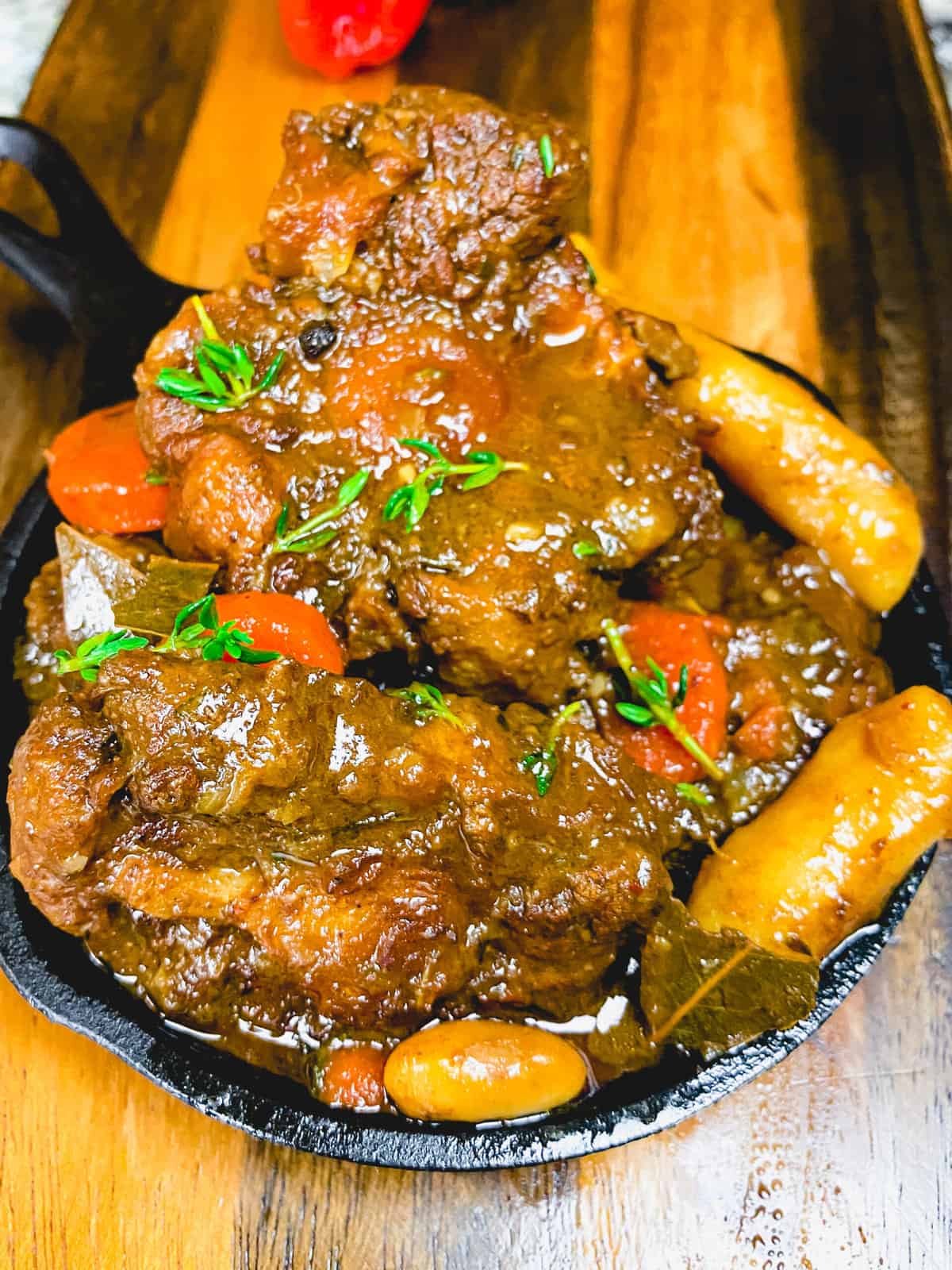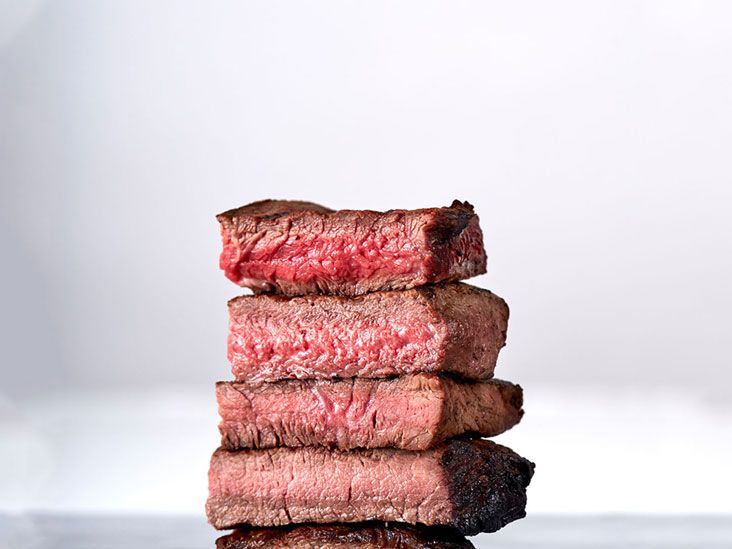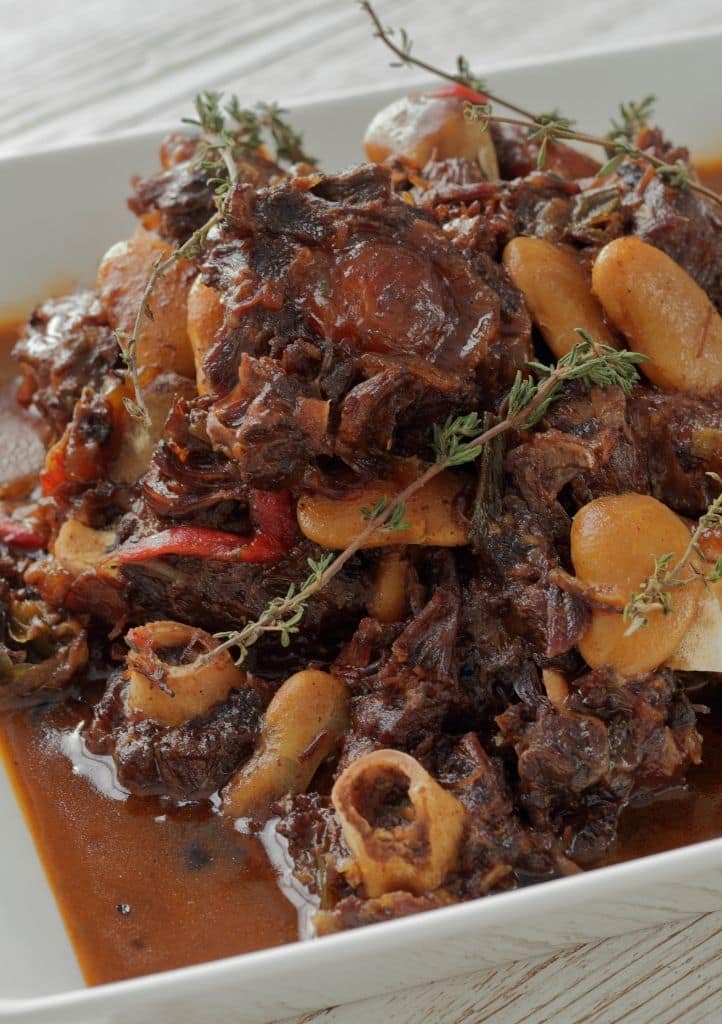
Introduction
What Is Oxtail?
Oxtail is a culinary delicacy known for its rich flavor and tender meat. Contrary to its name, oxtail does not actually come from an ox. It is typically sourced from the tail of a cow or steer. The tail is cut into thick pieces or chunks, which are often stewed or braised to release the superb flavors. Oxtail soup is a popular dish in British cuisine, but it also has variations in other countries such as South America, the Caribbean, Africa, and China.
The History And Origins Of Oxtail
The consumption of oxtail can be traced back to ancient civilizations. In medieval times, oxtail was a popular ingredient in stews and soups due to its availability and affordability. It was considered a lesser cut of meat, often consumed by the lower classes. However, over time, oxtail gained recognition for its unique taste and texture, which led to its rise in popularity among all social classes.
In many cultures, oxtail became a symbol of hearty and comforting cuisine. The slow cooking process required for oxtail allows the collagen and gelatin in the meat to dissolve, resulting in a rich and flavorful broth. This made oxtail an ideal ingredient for traditional dishes like oxtail soup, oxtail stew, and oxtail ragu.
Today, oxtail continues to be celebrated for its versatility and delicious taste. It is often featured in upscale restaurants or enjoyed as a homemade comfort food. The combination of tender meat and flavorful broth makes oxtail a beloved choice for hearty meals during colder seasons.
So next time you come across oxtail on a menu, embrace the opportunity to try this delicious cut of meat and enjoy the unique culinary experience it has to offer. Whether it’s a traditional oxtail stew or a modern twist on a classic dish, oxtail is sure to satisfy your taste buds and leave you wanting more.
Anatomy And Preparation Of Oxtail
Understanding The Structure Of Oxtail
Oxtail is a unique cut of meat that comes from the tail of a cow or steer. It is distinguishable by its large bone-to-muscle ratio, with the tail consisting of thick pieces or chunks of meat surrounding a central bone. This bone marrow adds depth and richness to the flavor of the meat during the cooking process. The connective tissues and collagen found in oxtail contribute to its tenderness when slow-cooked.
Tips For Properly Preparing Oxtail
Cooking oxtail requires a slow and gentle method to allow the collagen and gelatin to break down and create a flavorful broth. Here are some tips for properly preparing oxtail:
- Slow Cooking: Oxtail is best cooked using methods such as braising or stewing. The low heat and long cooking time allow the meat to become tender and the flavors to develop fully.
- Marinating: Marinating the oxtail before cooking can help enhance its flavor and tenderize the meat. A simple marinade of herbs, spices, and acidic ingredients like vinegar or citrus juices can work wonders.
- Skimming Off Fat: Oxtail tends to have a higher fat content, which can be skimmed off during the cooking process to reduce excess greasiness. Remove any visible fat to achieve a lighter and more balanced dish.
- Straining the Broth: After cooking, strain the broth to remove any small bones or impurities. This will result in a smoother and more refined texture for your oxtail dish.
- Serving Suggestions: Oxtail pairs well with hearty ingredients such as root vegetables, potatoes, or rice. It is often served with a side of crusty bread to soak up the delicious broth.
In conclusion, oxtail is a flavorful and versatile cut of meat that can be transformed into a delicious and comforting dish. Understanding its structure and following proper preparation techniques will ensure a successful oxtail cooking experience. So, why not give this unique cut of meat a try and enjoy the rich flavors it has to offer?
Culinary Uses Of Oxtail
One of the reasons oxtail is such a beloved ingredient is its versatility in the kitchen. Here are some popular culinary uses for oxtail:
Traditional Caribbean Oxtail Stew
Caribbean cuisine is known for its bold and vibrant flavors, and oxtail stew is no exception. This hearty dish is a staple in Caribbean households and is often slow-cooked with a medley of spices, vegetables, and aromatic ingredients. The result is a rich and flavorful stew with tender pieces of oxtail that fall off the bone. Serve it with rice, plantains, or bread for a wholesome and satisfying meal.
Other Delicious Oxtail Recipes
While oxtail stew is a classic preparation, there are many other delicious recipes you can try with this flavorful cut of meat. Here are a few ideas:
- Sautéed Oxtail: Brown the oxtail pieces in a pan before braising them with herbs, vegetables, and a flavorful liquid like red wine or beef broth. This method creates a caramelized crust on the meat and enhances the overall depth of flavor.
- Oxtail Soup: Simmer oxtail with vegetables, spices, and broth to create a comforting and hearty soup. Add noodles or rice for an extra dose of comfort.
- Oxtail Tacos: Shred the cooked oxtail and use it as a filling for tacos. Top with fresh salsa, cilantro, and a squeeze of lime for a mouthwatering meal.
- Oxtail Curry: Cook oxtail in a fragrant curry sauce with spices like turmeric, cumin, and coriander. Serve over rice or with naan bread for a delicious and aromatic curry experience.
Whether you’re enjoying classic Caribbean oxtail stew or experimenting with other recipes, this versatile ingredient is sure to elevate your culinary creations. Explore different flavors and techniques to discover your favorite way to prepare oxtail. So, next time you come across this underrated cut of meat, don’t hesitate to bring it into your kitchen and enjoy its rich flavor and tender texture.
Nutritional Value Of Oxtail
Oxtail As A Source Of Protein
Oxtail is not only delicious, but it also offers several nutritional benefits. One of the key nutrients found in oxtail is protein. Protein is essential for the growth and repair of tissues in our body. It plays a crucial role in building muscles, maintaining a healthy immune system, and supporting proper enzyme and hormone function. Incorporating oxtail into your diet can help you meet your daily protein needs.
Other Nutrients Found In Oxtail
In addition to being a good source of protein, oxtail contains several other important nutrients. Here are some key nutrients found in oxtail:
- Iron: Oxtail is rich in iron, which is essential for the production of red blood cells and oxygen transportation. Iron is also important for maintaining energy levels and supporting cognitive function.
- Zinc: Oxtail is a good source of zinc, a mineral that plays a vital role in immune function, wound healing, and cell division. Zinc is also involved in the metabolism of carbohydrates, protein, and fat.
- Selenium: Oxtail contains selenium, an antioxidant that helps protect cells from damage caused by free radicals. Selenium is also important for thyroid function and plays a role in DNA synthesis.
- Phosphorus: Oxtail is a good source of phosphorus, a mineral that is essential for bone health, energy production, and cell membrane function. Phosphorus also helps maintain normal pH levels in the body.
Including oxtail in your diet can provide you with these vital nutrients and contribute to a well-rounded and nutritious meal. As with any food, it’s important to enjoy oxtail in moderation as part of a balanced diet.
Remember to seek advice from a healthcare professional or registered dietitian before making any significant changes to your diet.

Health Benefits Of Oxtail
Boosting Immunity And Promoting Gut Health
Oxtail contains several essential minerals that can help boost immune function and promote gut health. Here are some of the health benefits:
- Zinc: Oxtail is a rich source of zinc, which plays a vital role in immune function. Zinc helps to activate immune cells and supports the body’s defense against pathogens.
- Selenium: Another important mineral found in oxtail is selenium, which acts as an antioxidant. Selenium helps protect cells from damage caused by oxidative stress and supports a healthy immune system.
- Protein: Oxtail is a good source of protein, which is essential for the growth and repair of tissues, including the cells of the immune system. Adequate protein intake is necessary for a strong immune response.
In addition to its immune-boosting properties, the gelatinous collagen found in oxtail can promote gut health. Collagen helps to support the lining of the digestive tract and may aid in reducing inflammation and promoting proper digestion.
Supporting Bone And Joint Health
The nutritional composition of oxtail makes it beneficial for bone and joint health. Here’s how:
- Phosphorus: Oxtail is a good source of phosphorus, a mineral that is essential for the development and maintenance of healthy bones and teeth. Phosphorus also plays a role in the synthesis of DNA and energy production in the body.
- Protein: In addition to its immune-boosting properties, protein is crucial for maintaining strong bones and healthy joints. It provides the building blocks necessary for the production of collagen and other connective tissues.
- Collagen: The gelatinous collagen found in oxtail can help support joint health. Collagen provides cushioning and support for the joints, which can help reduce pain and inflammation associated with conditions like arthritis.
Including oxtail in your diet can offer these health benefits and contribute to a well-rounded and nutritious meal. However, it’s important to enjoy oxtail in moderation as part of a balanced diet. Consulting a healthcare professional or registered dietitian before making any significant changes to your diet is advisable.
Where To Buy And Store Oxtail
Finding Quality Oxtail Cuts
- Look for oxtail at your local butcher shop or specialty meat stores. They often carry it fresh or frozen.
- You can also find oxtail at some grocery stores, either in the meat section or the frozen aisle.
- Consider buying oxtail from a trusted source that offers grass-fed or organic options for a higher quality product.
Properly Storing Oxtail For Maximum Freshness
- If you’re not cooking the oxtail right away, store it in the refrigerator for three to five days.
- Make sure to wrap it well in plastic wrap or place it in an airtight container to prevent contamination.
- For longer storage, you can freeze oxtail for up to a year. Wrap it tightly in plastic wrap and then place it in a freezer-safe bag or container.
- Label and date the oxtail before storing it in the freezer to keep track of its freshness.
It’s important to note that oxtail contains mostly bone cartilage and has very little meat overall. However, its unique flavor and texture make it a popular choice for creating mouthwatering stocks and stews. Additionally, oxtail offers a variety of health benefits.
Oxtail is rich in essential minerals that can help boost immune function and promote gut health. It is a good source of zinc, which activates immune cells and defends against pathogens. Oxtail also contains selenium, an antioxidant that protects cells from oxidative stress. The protein in oxtail is crucial for the growth and repair of tissues, including immune cells.
Furthermore, the gelatinous collagen in oxtail promotes gut health by supporting the lining of the digestive tract and aiding in digestion. It also contributes to bone and joint health. Oxtail is a good source of phosphorus, which is essential for healthy bones and teeth. Protein and collagen in oxtail support the production of connective tissues, providing cushioning and support for the joints.
Including oxtail in your diet can offer these health benefits, but it’s essential to enjoy it in moderation as part of a balanced diet. Consulting a healthcare professional or registered dietitian before making any significant changes to your diet is advisable.
Cooking Techniques For Oxtail
Slow Cooking And Braising Methods
To bring out the rich flavors and tenderize the oxtail, slow cooking methods such as braising and stewing are highly recommended. These techniques involve cooking the meat in liquid over low heat for an extended period of time. The collagen in the oxtail breaks down during the slow cooking process, resulting in a melt-in-your-mouth texture and intense flavors.
Braising is a popular method for cooking oxtail. Here’s how to do it:
- Season the oxtail with salt and pepper or your choice of spices.
- Heat oil in a large, heavy-bottomed pot or Dutch oven.
- Brown the oxtail on all sides to develop a flavorful crust.
- Remove the oxtail from the pot and set aside.
- In the same pot, sauté onions, garlic, and other aromatic vegetables until softened.
- Deglaze the pot with wine, broth, or a combination of liquids to enhance the flavor.
- Return the oxtail to the pot and add enough liquid to cover the meat.
- Bring the liquid to a simmer, then reduce the heat to low.
- Cover the pot and let the oxtail simmer slowly for several hours until it becomes fork-tender.
- Skim off any excess fat or impurities that rise to the surface during cooking.
- Serve the oxtail with the braising liquid as a sauce or reduce the liquid to create a more concentrated glaze.
Other Cooking Methods To Try
While slow cooking is the most common technique for preparing oxtail, there are other delicious ways to cook this flavorful cut of meat:
- Grilling: Oxtail can be grilled over indirect heat to give it a smoky flavor while still retaining its tenderness. Marinating the oxtail beforehand will add even more depth of flavor.
- Roasting: For a different twist, roast the oxtail in the oven at a low temperature. This method caramelizes the exterior while keeping the interior tender and juicy.
- Pressure cooking: If you’re short on time, a pressure cooker can be used to achieve similar results to slow cooking in a fraction of the time.
- Soups and stews: Oxtail is a popular ingredient in hearty soups and stews, adding richness and depth to the dish. Simmer the oxtail with vegetables and seasonings for a comforting meal.
Remember to adjust cooking times and temperatures based on your preference and the specific recipe you are following. Enjoy exploring the various cooking methods for oxtail and discover the immense flavor and tenderness this cut of meat has to offer.

Tips And Tricks For Cooking With Oxtail
Enhancing The Flavor Of Oxtail Dishes
- Marinate the oxtail before cooking to infuse it with additional flavors. A combination of herbs, spices, and acidic ingredients like vinegar or citrus juice can help tenderize the meat and add depth to the dish.
- Use aromatics like onions, garlic, and herbs to build a flavorful base for your oxtail recipe.
- Experiment with different liquids to braise or stew the oxtail in. Wine, broth, or a combination of both can enhance the flavors and add complexity to the dish.
- Consider adding umami-rich ingredients like soy sauce, Worcestershire sauce, or tomato paste to further enhance the taste of the oxtail.
How To Achieve Tender And Succulent Oxtail Meat
- Cook oxtail using slow cooking methods like braising, stewing, or pressure cooking. These techniques allow the collagen in the meat to break down slowly, resulting in a tender and melt-in-your-mouth texture.
- Ensure that the oxtail is browned well before braising to develop a flavorful crust on the meat.
- Simmer the oxtail on low heat for several hours until it becomes fork-tender.
- Skim off any excess fat or impurities that rise to the surface during cooking to achieve a cleaner and more flavorful dish.
- If using a pressure cooker, adjust the cooking time based on the recipe and the specific cut of oxtail to avoid overcooking and maintain the desired tenderness.
By following these tips and tricks, you can elevate your oxtail dishes and create memorable meals with rich flavors and tender meat. Whether you choose to braise, stew, grill, roast, or pressure cook the oxtail, experimentation with different cooking methods will help you discover the wide range of possibilities and culinary experiences that oxtail has to offer.
Tips And Tricks For Cooking With Oxtail
Enhancing The Flavor Of Oxtail Dishes
- Marinate the oxtail before cooking to infuse it with additional flavors. A combination of herbs, spices, and acidic ingredients like vinegar or citrus juice can help tenderize the meat and add depth to the dish.
- Use aromatics like onions, garlic, and herbs to build a flavorful base for your oxtail recipe.
- Experiment with different liquids to braise or stew the oxtail in. Wine, broth, or a combination of both can enhance the flavors and add complexity to the dish.
- Consider adding umami-rich ingredients like soy sauce, Worcestershire sauce, or tomato paste to further enhance the taste of the oxtail.
How To Achieve Tender And Succulent Oxtail Meat
- Cook oxtail using slow cooking methods like braising, stewing, or pressure cooking. These techniques allow the collagen in the meat to break down slowly, resulting in a tender and melt-in-your-mouth texture.
- Ensure that the oxtail is browned well before braising to develop a flavorful crust on the meat.
- Simmer the oxtail on low heat for several hours until it becomes fork-tender.
- Skim off any excess fat or impurities that rise to the surface during cooking to achieve a cleaner and more flavorful dish.
- If using a pressure cooker, adjust the cooking time based on the recipe and the specific cut of oxtail to avoid overcooking and maintain the desired tenderness.
By following these tips and tricks, you can elevate your oxtail dishes and create memorable meals with rich flavors and tender meat. Whether you choose to braise, stew, grill, roast, or pressure cook the oxtail, experimentation with different cooking methods will help you discover the wide range of possibilities and culinary experiences that oxtail has to offer.
Conclusion
Appreciating The Versatility And Flavor Of Oxtail
Oxtail is a unique cut of meat that offers a rich beefy flavor and a tender texture. It can be prepared using various cooking methods, allowing for versatility in the kitchen. The marbling and collagen content in oxtail contribute to its succulence and depth of flavor when cooked correctly. From hearty stews and braised dishes to grilled or roasted preparations, oxtail can elevate any meal with its distinct taste.
Final Thoughts And Recipe Inspiration
Oxtail dishes are popular in many cuisines around the world, from Jamaican oxtail stew to Korean braised oxtail soup. The possibilities are endless, and you can get creative with different seasonings, spices, and ingredients to make your own unique oxtail recipes. Whether you’re a seasoned home cook or an adventurous food lover, exploring the flavors and textures of oxtail will provide a delightful culinary experience.
If you’re looking for recipe inspiration, here are a few ideas to get you started:
| Recipe Name | Preparation Style |
|---|---|
| Oxtail Stew | Braised |
| Oxtail Pho | Soup |
| Oxtail Curry | Slow Cooker |
| Oxtail Tacos | Grilled |
Try out these recipes or create your own, and enjoy the unique flavors and tenderness that oxtail brings to the table.

Keep up with weekly specials through Facebook under “The Grill at Great Bridge.”